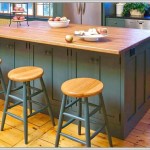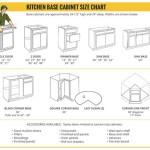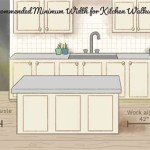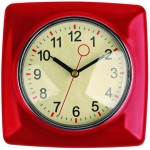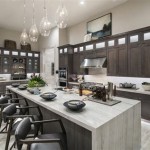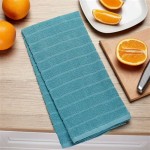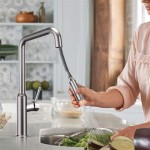Decorative Kitchen Plates: A Complementary Element for Wallpaper Design
Decorative kitchen plates, often overlooked as purely functional items, can serve as a powerful design element to complement and enhance kitchen wallpaper. Their integration into the overall aesthetic requires careful consideration of color palettes, patterns, themes, and textures. When thoughtfully curated and displayed, decorative plates can transform a kitchen space, adding visual interest, personality, and a touch of elegance.
The versatility of decorative plates lies in their ability to bridge the gap between functionality and art. They can be displayed in a variety of ways, offering flexibility in design implementation. This includes wall-mounted arrangements, display on shelves or plate racks, and even incorporation into centerpieces or tabletop settings. The choice of display method should be carefully considered in relation to the overall kitchen design and the characteristics of the wallpaper used.
Effectively integrating decorative plates with wallpaper requires an understanding of design principles such as color theory, pattern matching, and visual balance. A well-coordinated arrangement can create a cohesive and harmonious space, while a mismatched approach can lead to a cluttered and disjointed appearance.
Understanding Color Harmony and Contrast
Color plays a crucial role in the successful integration of decorative plates and wallpaper. The selection of plate colors should be guided by the existing color scheme of the wallpaper and the overall kitchen design. Harmonious color schemes involve using colors that are adjacent to each other on the color wheel, creating a sense of unity and balance. For example, if the wallpaper features shades of green and blue, plates in complementary shades of teal, aqua, or even a contrasting yellow could be chosen to create a visually pleasing effect.
Contrast, on the other hand, can be used to create visual interest and highlight specific elements. If the wallpaper is predominantly neutral, plates with bold and vibrant colors can be used to add a pop of personality. Similarly, if the wallpaper features a strong pattern, plates with simpler designs and contrasting colors can help to break up the visual monotony. However, it is important to use contrast judiciously to avoid overwhelming the space.
Consider the undertones of both the wallpaper and the plates. Even seemingly neutral colors can have warm or cool undertones, which can affect the overall harmony of the design. Matching these undertones can create a more cohesive and balanced look. For instance, if the wallpaper has a warm beige undertone, plates in ivory or cream would be a better choice than plates in a stark white with cool undertones.
The use of a color wheel can be an invaluable tool in selecting complementary and contrasting colors. It provides a visual representation of color relationships, making it easier to identify harmonious and contrasting combinations. Online tools and color palette generators can also be helpful in exploring different color options.
Pattern Matching and Complementary Textures
The patterns on both the wallpaper and the decorative plates need to be carefully considered to create a cohesive and visually appealing design. Matching patterns can create a sense of unity and sophistication, but it requires careful attention to scale and repetition. For instance, if the wallpaper features a small, intricate floral pattern, plates with a similar pattern, but on a larger scale, could be used to create a harmonious yet dynamic effect.
Conversely, contrasting patterns can add visual interest and prevent the design from becoming too monotonous. If the wallpaper features a geometric pattern, plates with organic or abstract designs can be used to create a balanced and eclectic look. However, it is important to ensure that the contrasting patterns do not clash or compete for attention. The key is to create a sense of visual hierarchy, where one pattern is dominant and the other serves as a supporting element.
The textures of both the wallpaper and the decorative plates also play a significant role in the overall design. Smooth, glossy plates can provide a sleek and modern contrast to textured wallpaper, while matte or rustic plates can complement a more traditional or farmhouse-style kitchen. The texture of the plates can also be used to enhance the tactile experience of the space.
Consider the material of the plates as well. Porcelain, ceramic, earthenware, and even metal plates can offer different textures and visual appeal. The choice of material should be guided by the overall design aesthetic and the functional requirements of the space. For example, stoneware plates can add a rustic charm to a farmhouse-style kitchen, while porcelain plates can lend a touch of elegance to a more formal setting.
When combining different patterns and textures, it is important to maintain a sense of balance and harmony. Avoid using too many competing patterns or textures in a small space, as this can create a cluttered and overwhelming effect. Instead, focus on creating a cohesive and visually pleasing arrangement that reflects the overall style of the kitchen.
Display Techniques and Arrangement Strategies
The way decorative plates are displayed can significantly impact their visual impact. Wall-mounted arrangements are a popular choice for showcasing decorative plates, offering a dynamic and artistic display. The arrangement can be symmetrical, asymmetrical, or eclectic, depending on the desired effect. Symmetrical arrangements create a sense of order and formality, while asymmetrical arrangements can add a touch of whimsy and informality.
Plate racks and shelves provide another versatile option for displaying decorative plates. Plate racks can be used to showcase a collection of plates in a vertical or horizontal arrangement, while shelves offer more flexibility in terms of placement and arrangement. Shelves can also be used to display other decorative items alongside the plates, creating a layered and visually rich display.
Incorporating decorative plates into centerpieces or tabletop settings can add a touch of elegance and sophistication to the dining area. Plates can be used as chargers, decorative platters, or even as part of a layered centerpiece arrangement. The key is to choose plates that complement the overall table setting and the occasion.
Consider the spacing between the plates when creating a wall-mounted arrangement. Too much spacing can make the arrangement look sparse and disjointed, while too little spacing can create a cluttered and overwhelming effect. Experiment with different spacing options to find the optimal balance. Using templates or mock-ups can be helpful in visualizing the final arrangement before committing to a permanent installation.
Lighting can also play a crucial role in enhancing the visual impact of decorative plates. Strategically placed lighting can highlight the colors, patterns, and textures of the plates, creating a warm and inviting ambiance. Consider using spotlights, track lighting, or even under-cabinet lighting to illuminate the plates and create a focal point in the kitchen. The intensity and color temperature of the lighting should be carefully considered to avoid creating harsh shadows or distorting the colors of the plates.
When selecting decorative plates, consider the size and scale of the plates in relation to the wall space. Larger plates can make a statement on a large wall, while smaller plates can be used to create a more intimate and delicate display. The scale of the plates should also be considered in relation to the other decorative elements in the kitchen. A well-proportioned arrangement will create a sense of balance and harmony.
Ultimately, the goal is to create a display that reflects your personal style and enhances the overall aesthetic of the kitchen. Don't be afraid to experiment with different arrangements and techniques until you find a look that you love. The key is to have fun and let your creativity guide you.

Porcelain Plates Wallpaper

Vintage English Painted Plates Kitchen Wallpaper Country Cottage Farmhouse Wall Decor With Moroccan Plate

Decorating With Plates Using Dinner To Decorate Your Walls

Set Of 3 Wall Plates Decorative Ceramic Hanging Large Turkish Handmande Home Kitchen Decor Serving Desert Dinner Platter Gift

Kitchen Vinyl Wallpaper L And Stick Backsplash 3d Blue Self Adhesive Waterproof Removable Roll

Decorative Plates For Kitchen Wall Design Ideas

Decorative Plates For Kitchen Wall Contemporary Mary Mcdonald

20 Beautiful Walls That Explain How To Decorate With Plates

Kitchen Fornasetti Plates Design Ideas

Kitchen Wall Fabric Wallpaper Design Ideas
Related Posts

